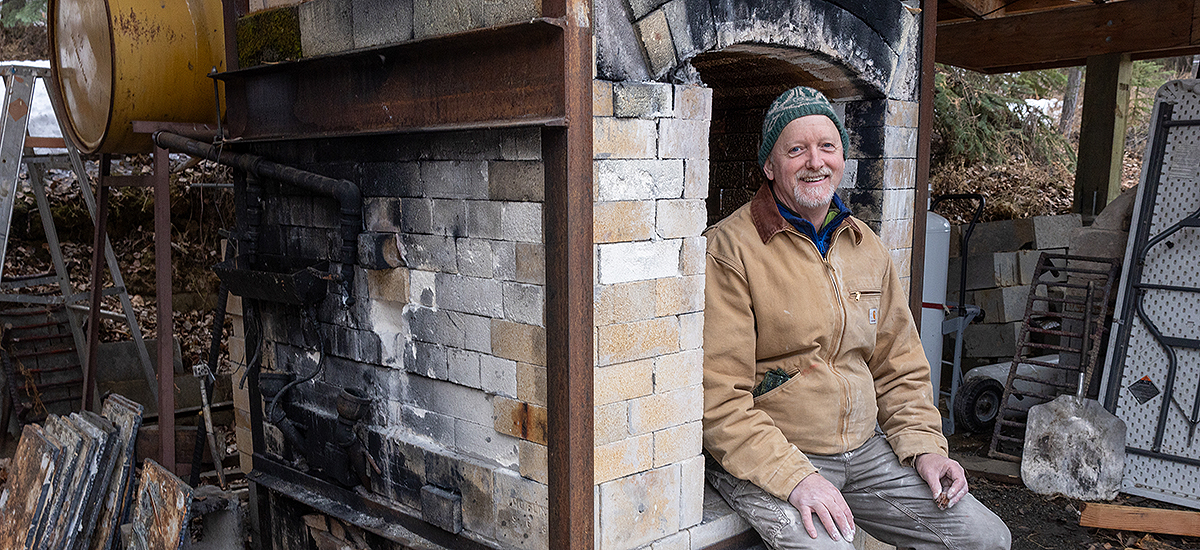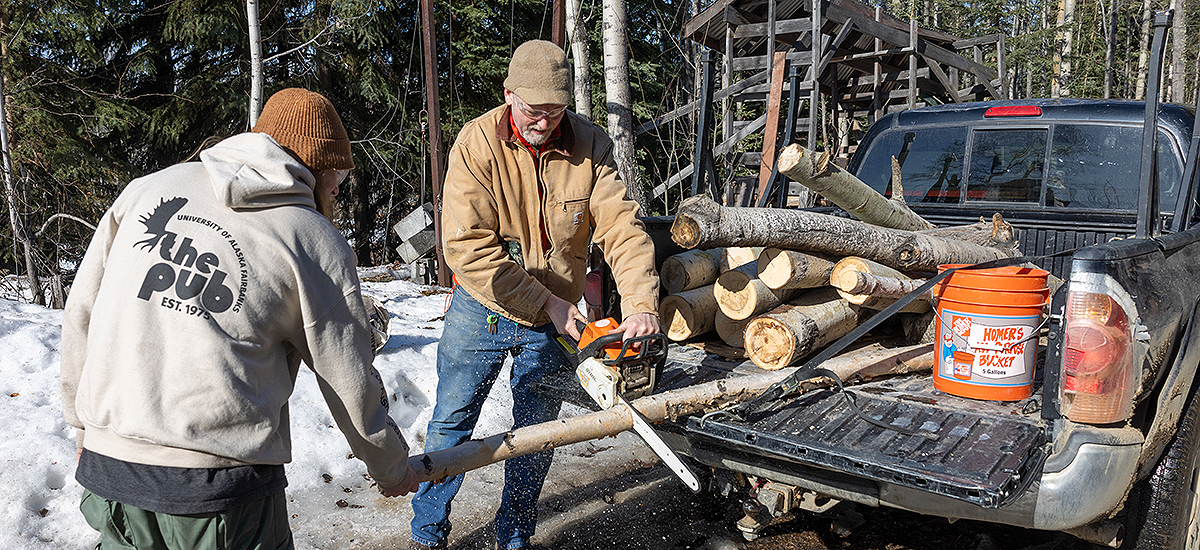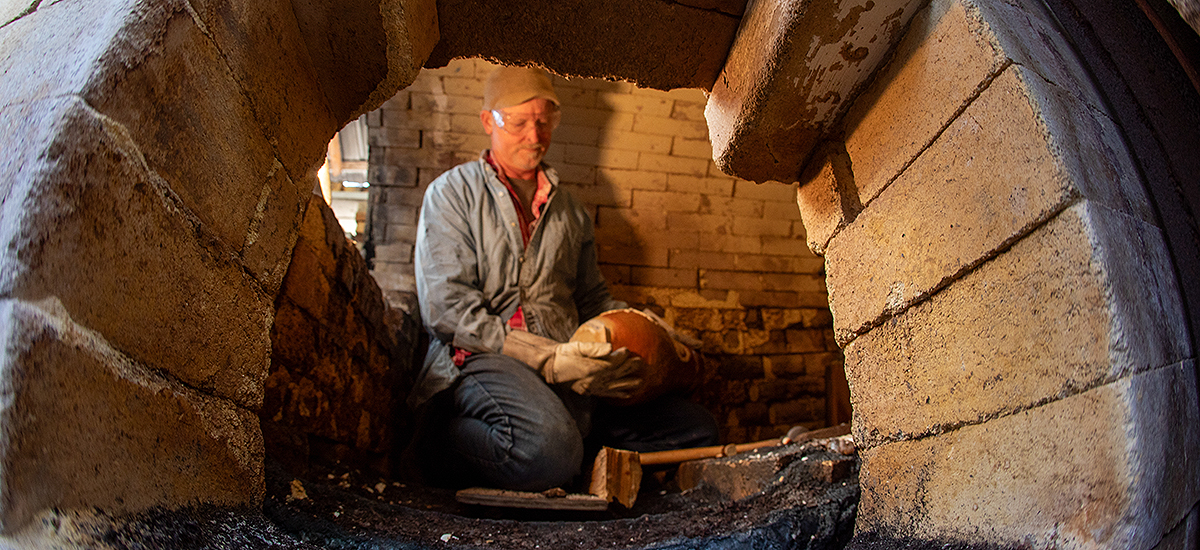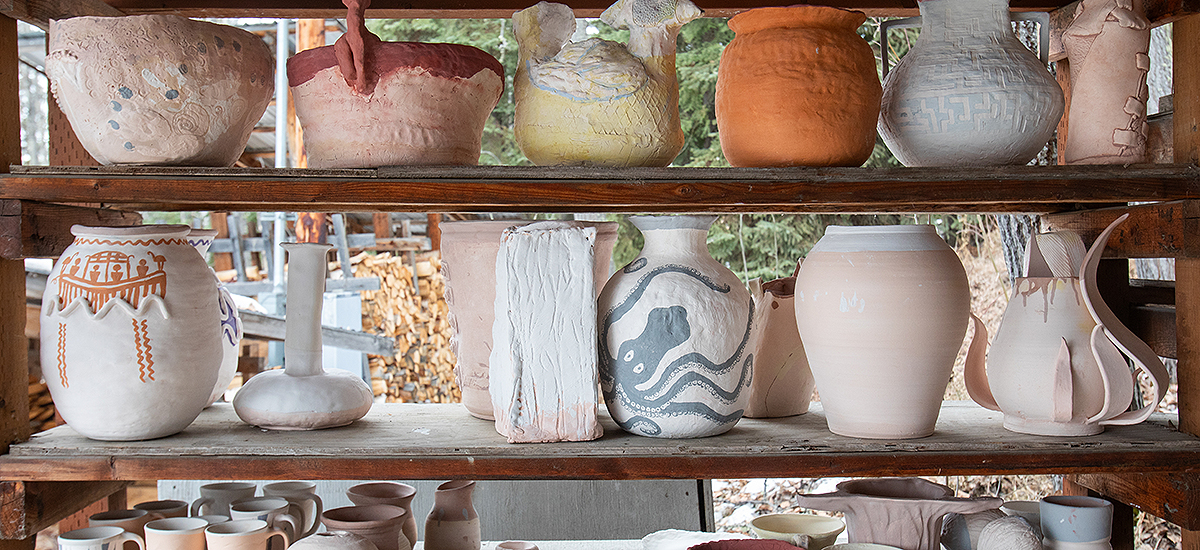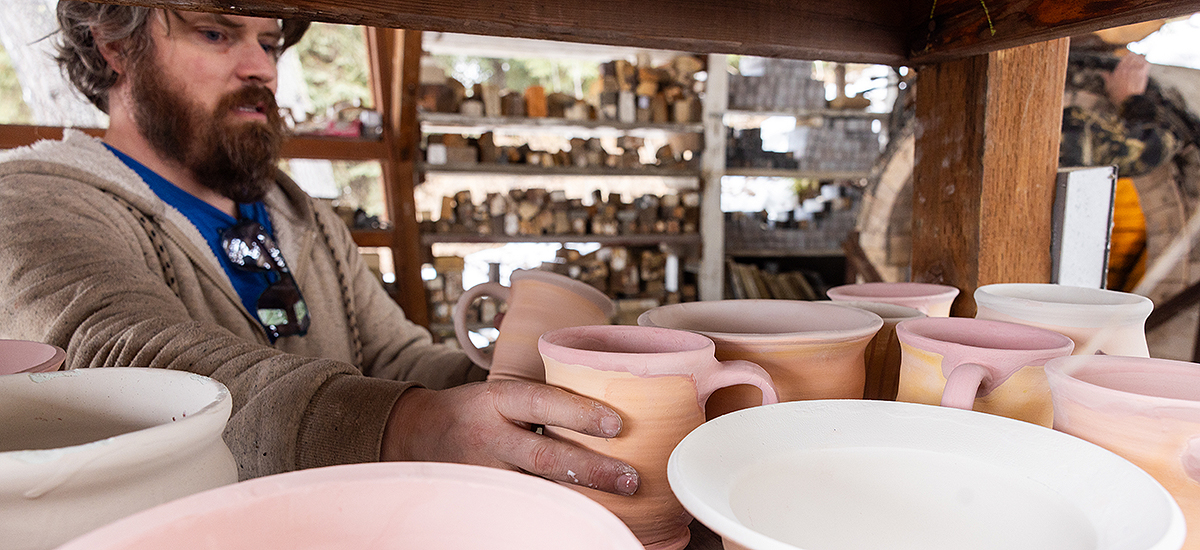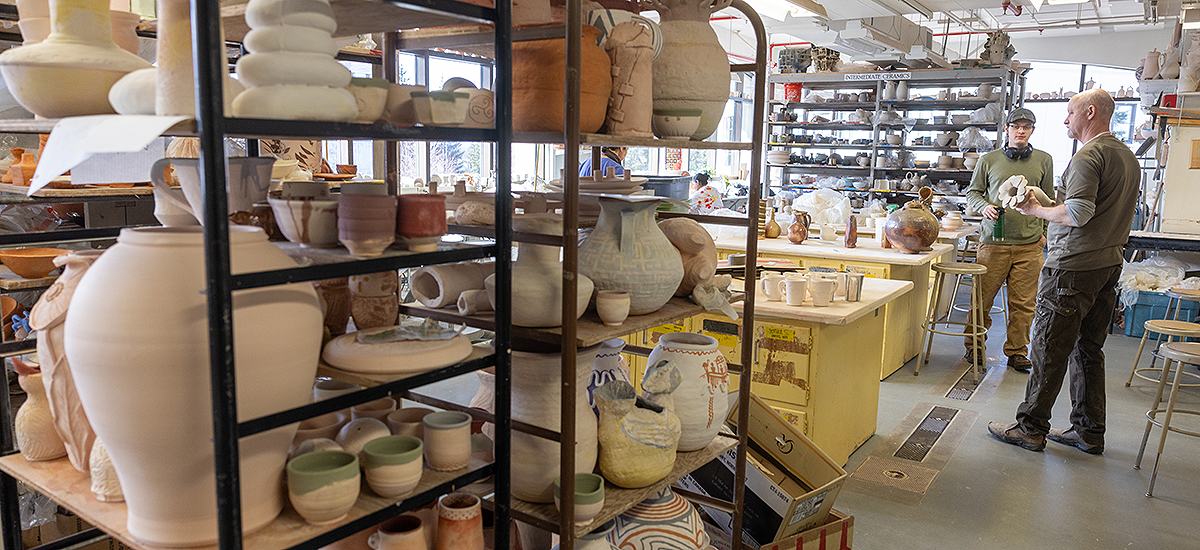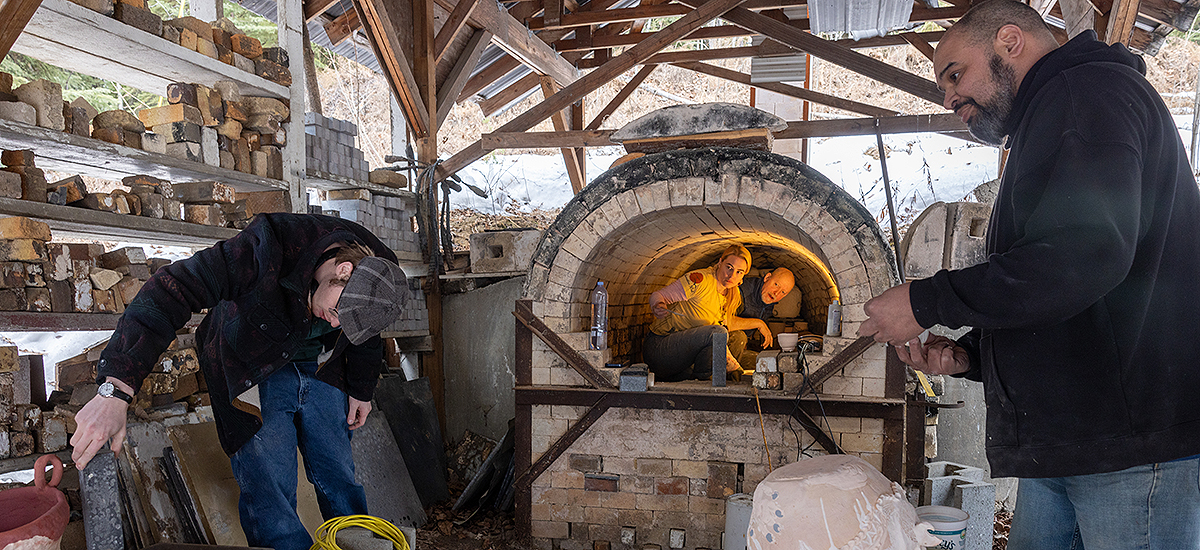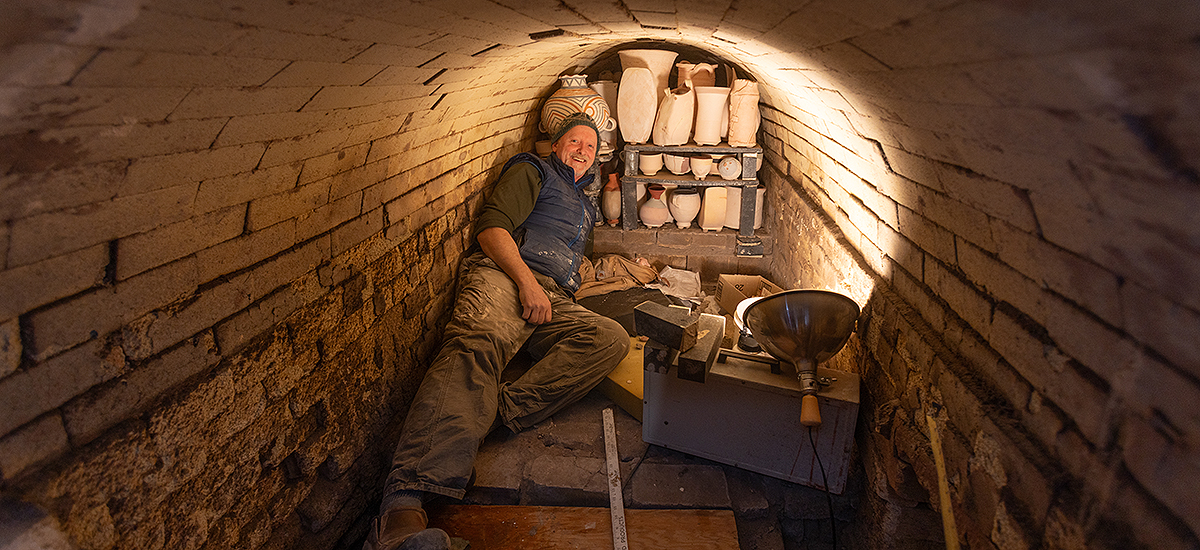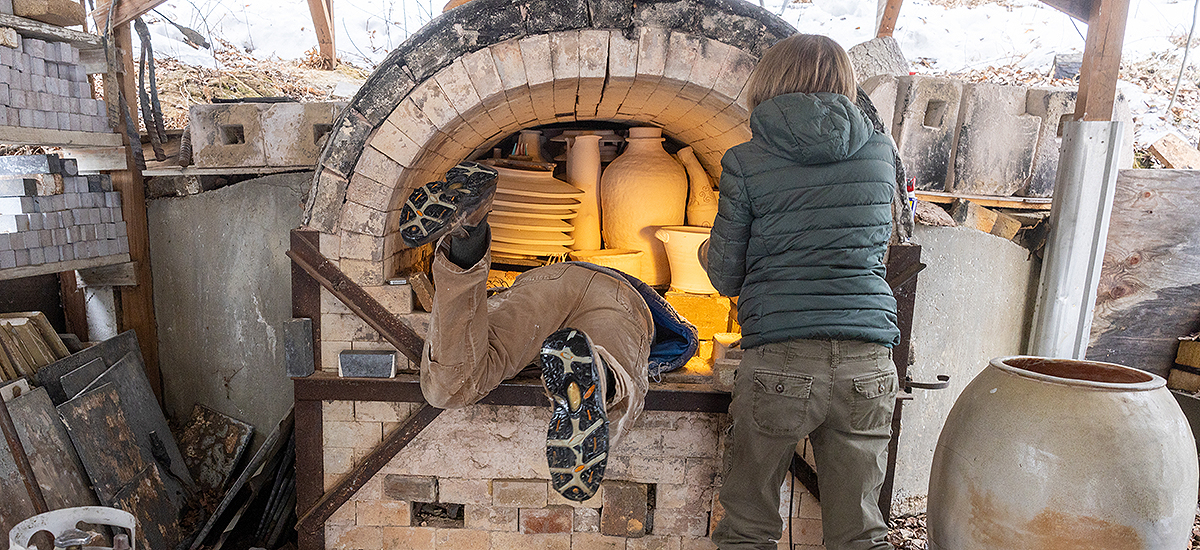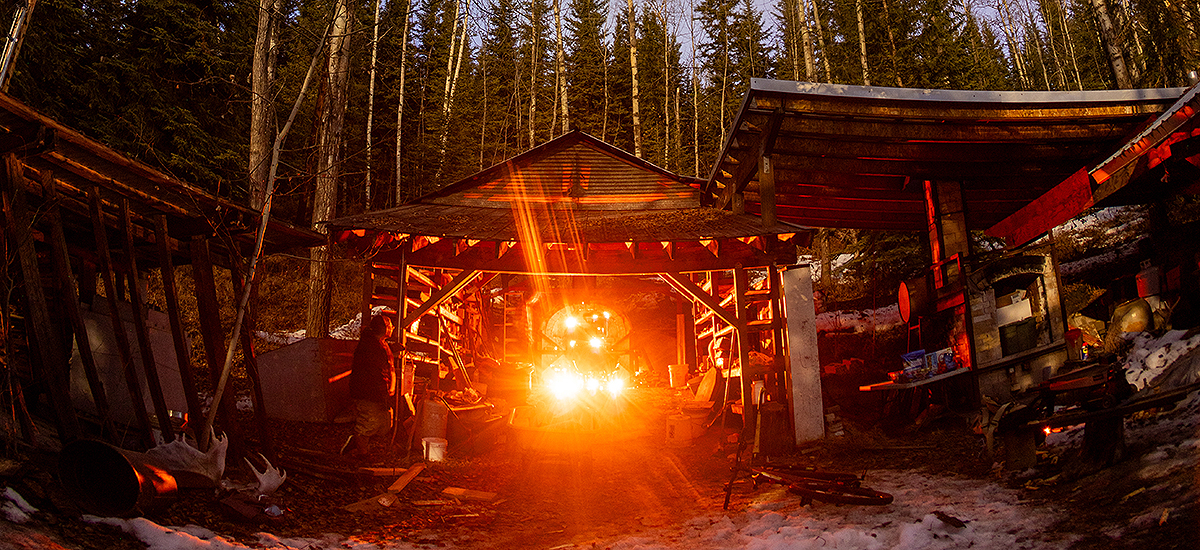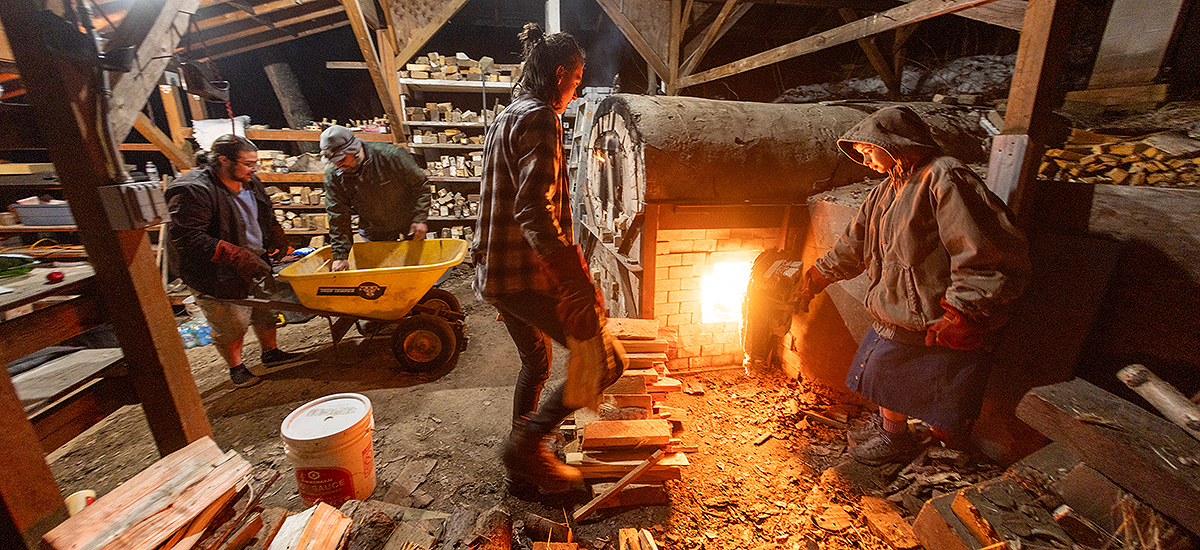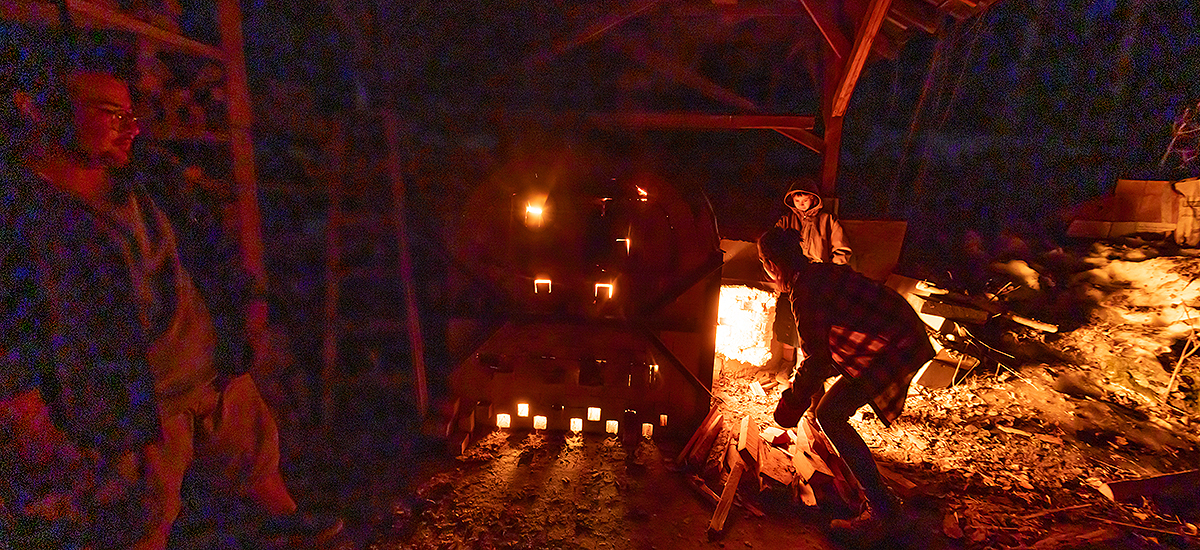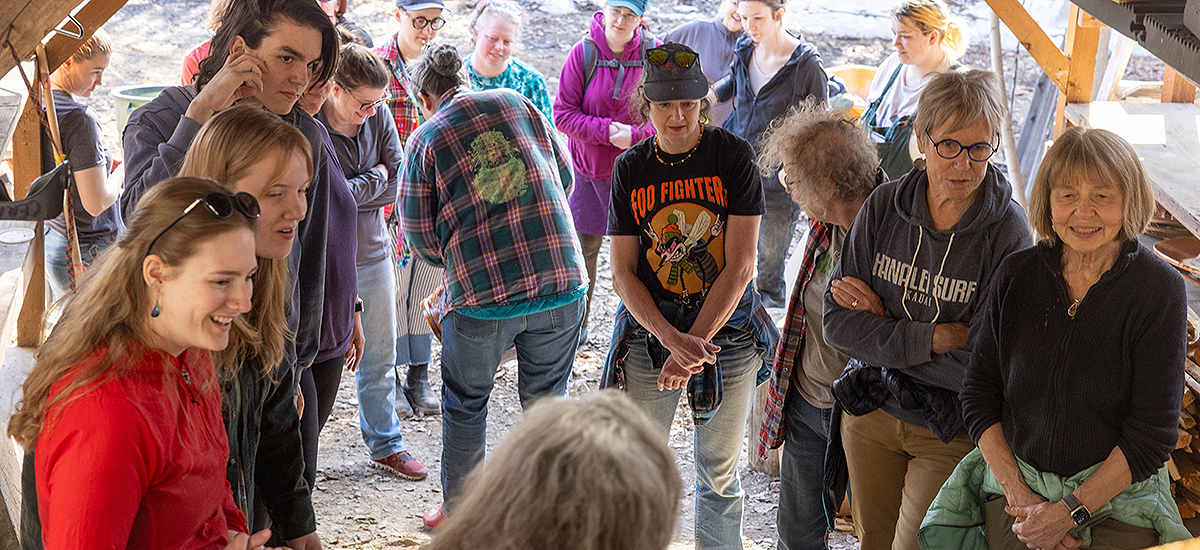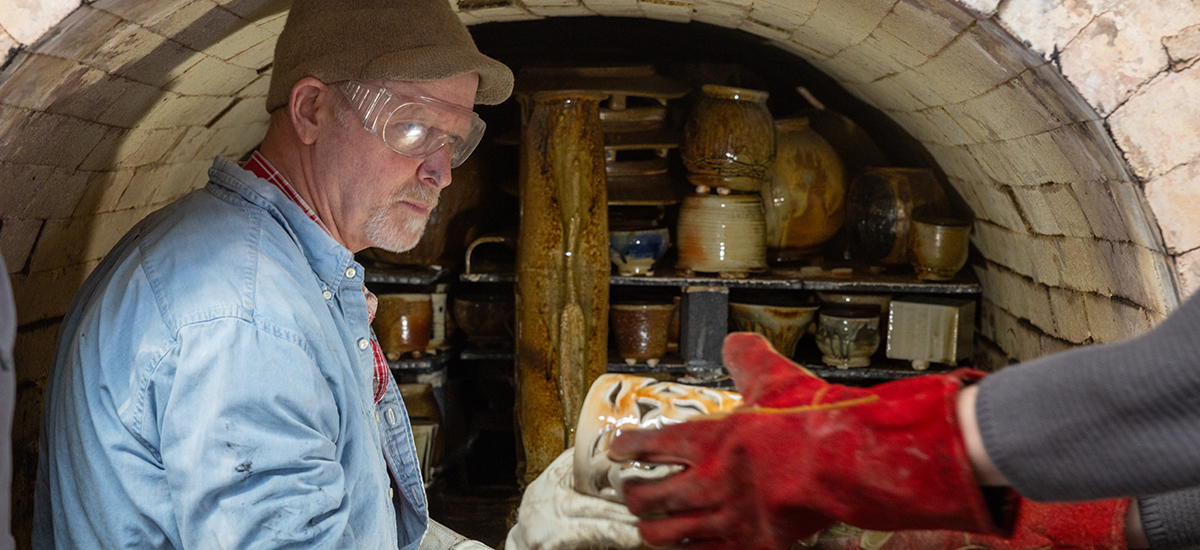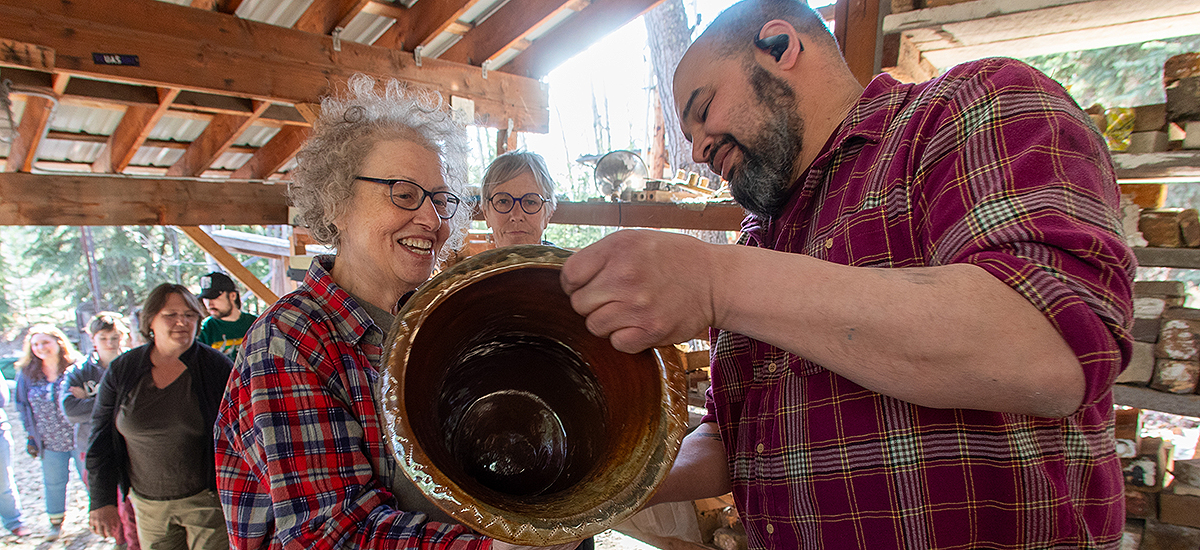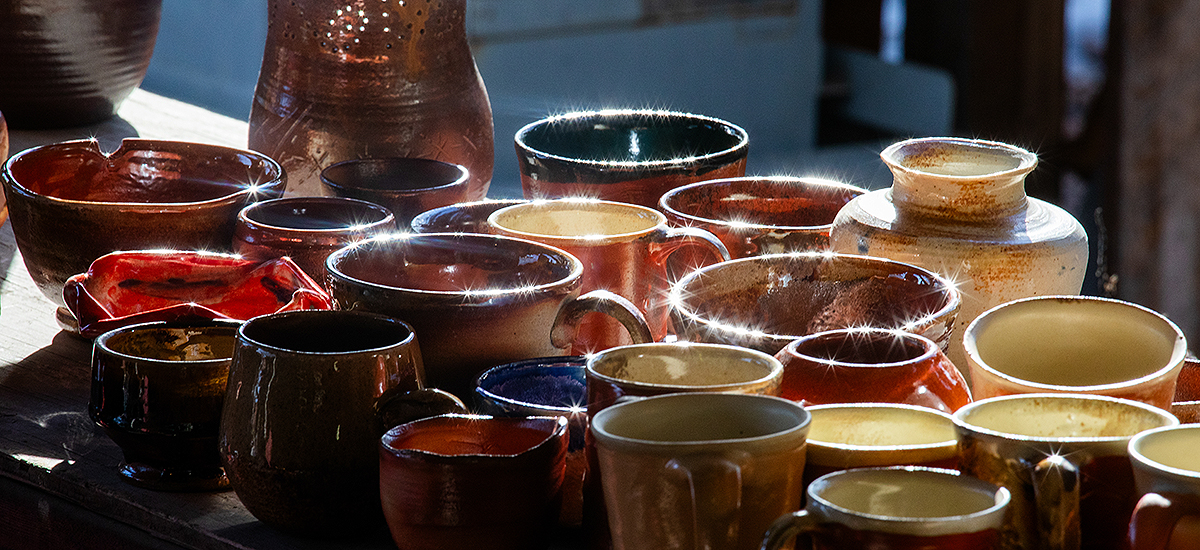UAF photo by Eric Engman.
Volunteers tend to UAF's anagama kiln as it was being fired with wood around the clock
for nearly 50 hours in April 2024.
By Lizzy Hahn
On a crisp morning in April, University of Alaska Fairbanks ceramics professor James Brashear lit a fire in a large, white-bricked kiln at the end of a road on the Troth Yeddha’ Campus. It was a ritual he’d repeated many times during his 30-year career at UAF. But for Brashear, this particular morning’s blaze marked a transition of sorts.
Brashear retired in May. The spring firing of the anagama kiln — also known as a tunnel kiln — was a fitting bookend for his three decades of inspiring artists at UAF. Brashear first pitched the idea for the wood-fired kiln in 1994 and then supervised its construction. In total, he built five kilns at UAF: the anagama kiln, the waste oil kiln, the bourry box salt wood kiln, the Olsen fast firewood kiln and the raku kiln.
“They're all based on different historical periods,” Brashear said. “What I find interesting about these kilns is that art is a product of its culture. Art is a product of society. At the same time, society is influenced from art.”
This spring was the first time since 2019 that the anagama kiln has been fired, a week-long process from start to finish. Nearly 400 pots, plates and vessels of various shapes and sizes made by students in several classes filled the kiln, which burns constantly for over two days, uses two cords of wood and reaches temperatures of 2,300 degrees Fahrenheit.
THE BUILDER
“The anagama was the first kiln that we built. This has been one of my interests, designing construction of kilns, usually based on historical models,” Brashear said.
Brashear said anagama, meaning "tunnel" kiln, is an ancient style originating in China that spread to Japan and Korea. “The wood ash that settles all over the pots, over a two-day period of firing the kiln, it will eventually flux and create a glass.”
PIECES OF POTTERY
Over the course of the spring semester, UAF ceramics students in three classes shaped their unique pieces. Each class received specific project assignments. Beginning pottery students made large historic pots, intermediate pottery students made tea bowls, and the advanced students had free rein.
LOADING THE KILN
For days, ceramicists loaded pottery pieces into the kiln. Ceramics students signed up for four-hour shifts throughout the firing, feeding the fire until the kiln reached the desired temperature.
“They started a little tiny fire Thursday evening into Friday morning and then gained temperature all the way through Saturday,” said Teresa Shannon, adjunct professor of ceramics.
THE FIRE
The fire burned constantly for more than two days, using two cords of wood and reaching temperatures of 2,300 degrees Fahrenheit. That’s about the same temperature as the lava in many volcanoes.
“So hot,” Brashear said. “It's white heat. It melts steel, it melts anything that's in there.”
UNLOADING THE KILN
Almost 50 hours later, it was all over. The fire was out. The pieces were finished. The wood ash had settled on the pots, and the intense heat transformed the ash into a glass glaze.
For students, the experience was more than just the completion of a project.
“Everyone in the ceramics department comes out. Everyone came, and it was a party. I love to see the community in the ceramics department, and that's why I'm continuing to do ceramics,” said student Kalysta Fujihana.



